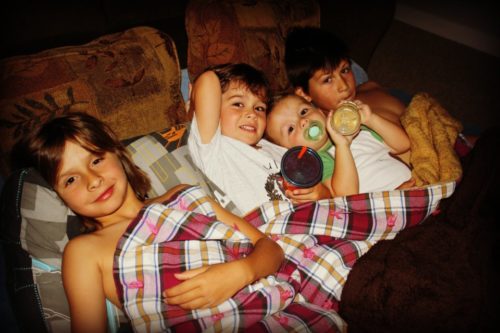Sleep Problems: Older Children, Toddlers, Stumbling Blocks
Siblings sharing a vacation bed – “A nickel to the first one asleep”It seems like I can’t escape dealing with sleep problems (yep, they’re that common) and just as difficult to answer.
Narrowing it a bit (at least in my mind) to three groups: Infants, toddler-big kids (schoolers) and biggest kids (teens).
I’ve covered infants and some teens. Now some issues of toddler-big kids.
Sleep problems wouldn’t be so difficult to write about if there just could be a simple answer fitting most situations – AND, that answer was never related to emotionally charged or vested interests… (sigh) but there you are.
Toddler – Big Kid Sleep Problems
Toddlers, Pre-school, Primary School
I wish this issue was strictly physical and medical; but it isn’t. Unfortunately, it involves parenting, lifestyle and social issues as well (he says with a slight wince watching for your reaction).
I don’t say this intending to upset you; merely, that as we go through these you might notice some things you are doing (have done) which have or are causing these very sleep problems to exist; and why we are talking about them now.
You do remember our talk about sleep during the two-week visit, when I assured you that baby’s multiple sleep cycles during the night would gradually lengthen and be much similar to that of an adult (i.e. 90-120 minutes) by three to four years old. Right?

Well they did, even though it doesn’t look like it; but, that doesn’t mean that was the end of possible problems. In fact, habits that seemed trivial enough to ignore advice back then, often choose toddler-hood and school-age to come back and bite us in the dairy-aire. And there are other issues that can pop up around now too.
Sleep Problems… Not Just For Infants Anymore
Just like back then, you are not alone. Let’s see if we can get started on improving the situation.
The cause of night-awakening? First, same as for babies, issues like: poorly timed naps, inconsistent sleep schedule or need for parental support.
Secondly, issues unique to older children like change in routine, environment, school, friends, burgeoning independence or unresolved emotional issues.
And Third, although less likely, it could be some physical/medical issues which come to the front about this age.
How Does Sleep Work?
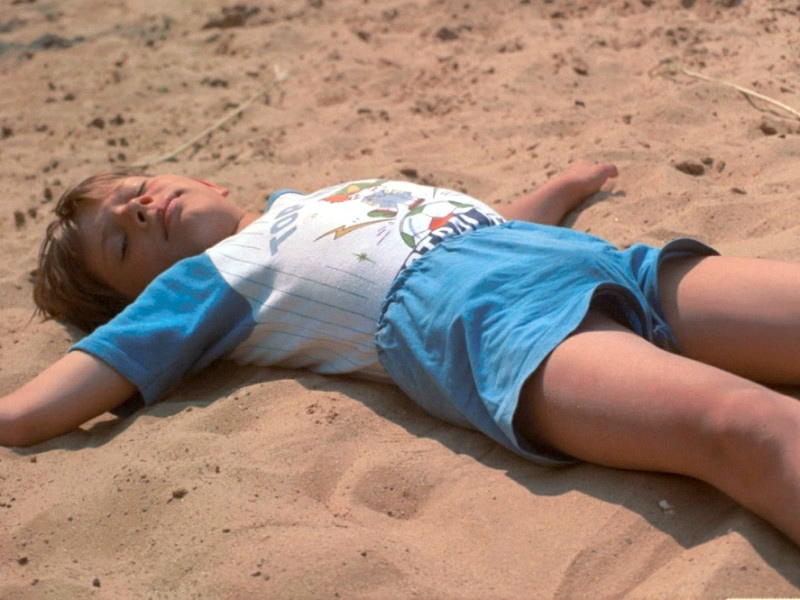
Unlike having courtesy, respectfulness, honesty or even eating, parents don’t need to teach children how to sleep – it just happens! It’s a bodily function, like breathing. There are, however, some individual differences, although not as many as you might think.
There are two separate systems at play to control a person’s sleep: First, Homeostatic sleep pressure – Adenosine (sleepy hormone) builds up while we are awake and is broken down during sleep – the longer we are awake the sleepier we feel.
The second is The circadian rhythm, [AKA body clock; AKA master clock; AKA circadian pacemaker.] In the brain, in the hypothalamus, in the suprachiasmatic nucleus (SCN) a group of neurons actually sends out pulses of hormones on a cyclic basis, modified by light, to which it is highly sensitive. Day → cortisol for wakefulness; Night → melatonin supporting sleep.
It’s truly great when, at the end of the day, the Sleep Pressure aligns with the Circadian Rhythm. When it doesn’t… well, you know! Without the recommended 9 or more hours of sleep, children get cranky, wired and even aggressive.
They have a hard time remembering facts, focusing and solving problems. Which then makes them confusing to teachers and doctors who worry about things like ADHD. In addition, Growth Hormone is secreted during sleep which, if interrupted, doesn’t bode well for their efforts to grow.
Getting “Aligned”
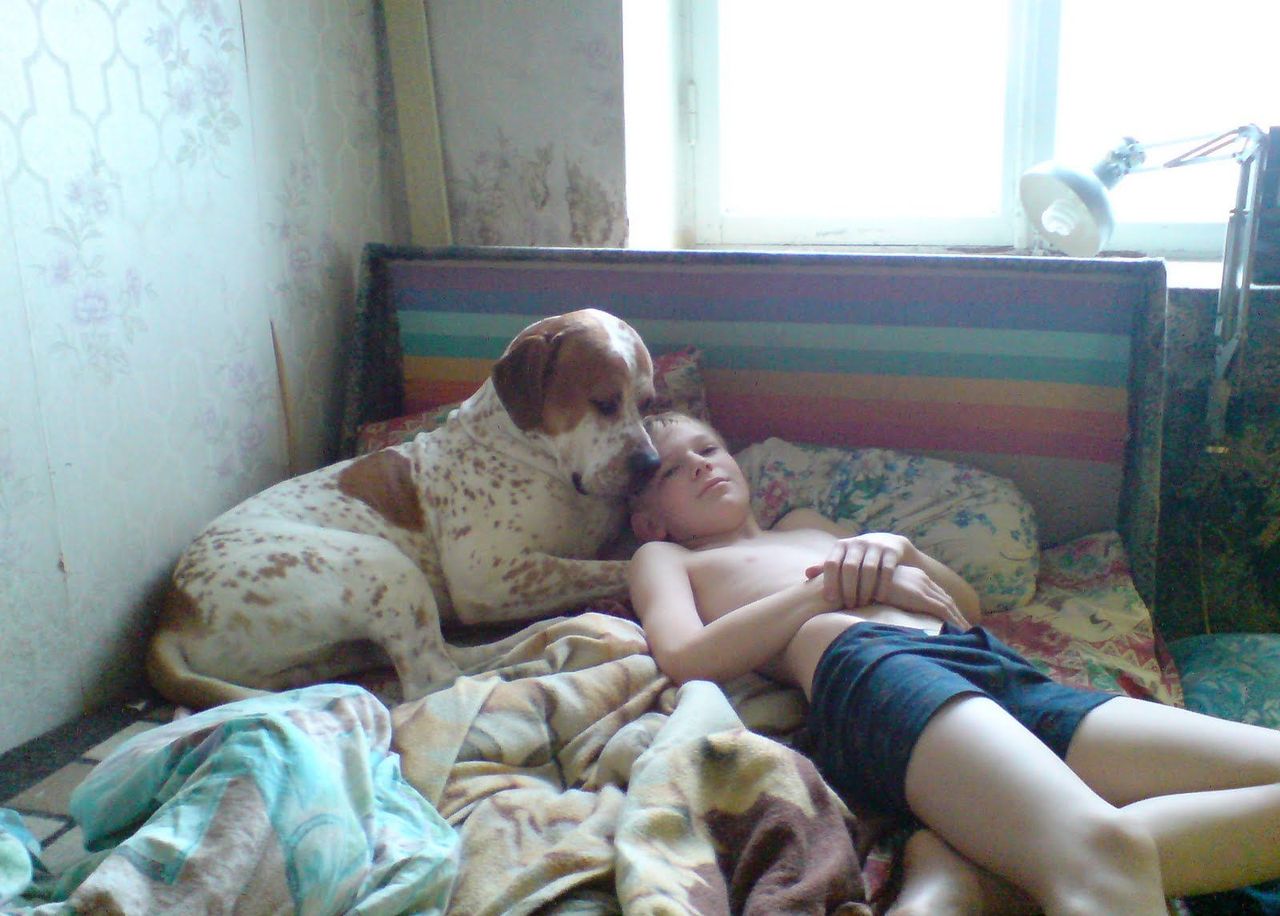
You already know about this, unless you’ve never crossed a time zone, worked the graveyard shift or switched to daylight savings time! Getting out of alignment gives rise to all sorts of problems including bedtime resistance, early rising and split night sleep patterns from cortisol being produced when it shouldn’t be.
Didn’t your grandma always tell you that if you want a good sleep at night you should “get up in the morning?” What she meant by that was “same time” and “early.”
You’re concerned about sleep? Stabilize the same wake-up time through the week and on weekends as well. Melatonin (sleepy hormone) begins 1-2 hours after lights dim; so, that’s when you should start getting kids ready for bed. Dim lights (especially those blueish ones), close drapes, turn off screens (phones, computer, TV) and invent other “rituals” that will become “sleepy time” habits.
Easiest time for children to fall asleep is when their sleep pressure is high and their circadian rhythm is sending sleep signals at the same time; so, manipulate for exposure to morning sunlight and evening darkness on a synchronized schedule.
It wouldn’t hurt you to do the same thing you know.
Bedtime Resistance

A mini sleep crisis usually happens to the best of families on an annual basis: the day the new school year starts; especially for the first time! Putting aside all the emotional/social aspects, it’s the abrupt change in sleep/wake times that I’m referring to.
The earlier wake-up time and mental exhaustion mis-aligns their “sleep pressure level” and their “body clock”! They may want to sleep through dinner and then be awake long after their new bedtime.
Just as you have learned from sleep issues in the past, the crisis will eventually end, and the “cure” is consistency in the new habits – with a little ingenuity thrown in to make the changes applicable to an older child. Bedtime rituals start at least an hour before actual bedtime, “screens” go off, lights go down, music changes to the quiet/calming kind and stories are read.
What may take a bit of forethought on your part is around two other changes: exercise/activity and their need for parental “connection time.” Daily exercise is essential for good sleep hygiene. Cortisol is released which adds to adequate sleep pressure at the end of the day and exposure to direct sunlight helps keep the body clock aligned. But exercise within 2 hours of bedtime produces hormones that diminish sleep pressure.
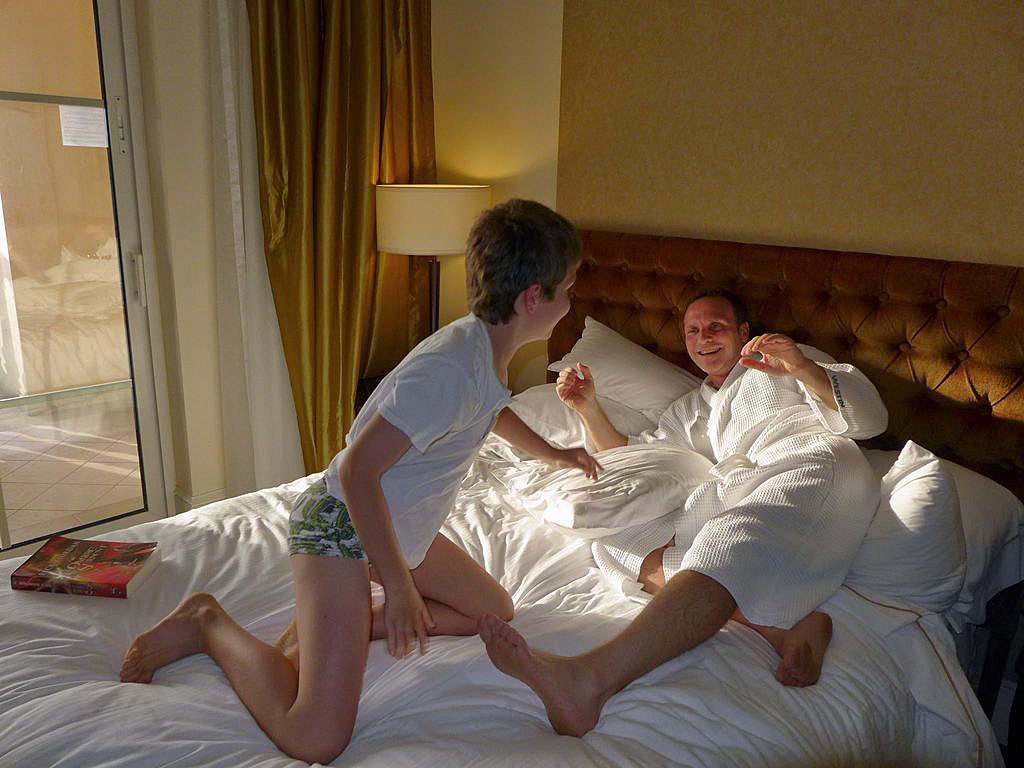
Additionally, the need for parental connection won’t have been met having been at school all day and many children just won’t settle until that unconscious need is met. A warning, try making up for those unmet needs at the very last minute using a period of rough housing and I bet nine out of ten of you won’t ever do that again!
Look, that’s why we get the big bucks as parents. We’ve got to figure out how our circumstances can fit in exercise and parental connection two or three hours before bed time; and then systematize it with rules or habits so it can be sustainable for everyone. Believe me, letting the little darling’s sense that you’re rushing to get them to bed will put down anchors so solid you’ll be renting a fork-lift to solve the problem.
When rituals are working, exercise is adequate and early, and you’ve made effort to be involved, then lying next to them for five minutes and asking about their day or problems will be the culmination to a great day.
Even at my advanced age, I still remember being read to by mom or dad at bedtime with great nostalgia.
Dropping the nap
I have to confess in all that I’ve written so far, I’ve only been thinking of school-aged children; but, it’s been brought to mind that younger children can be just as “mis-aligned” too when starting day care. Perhaps even more so.
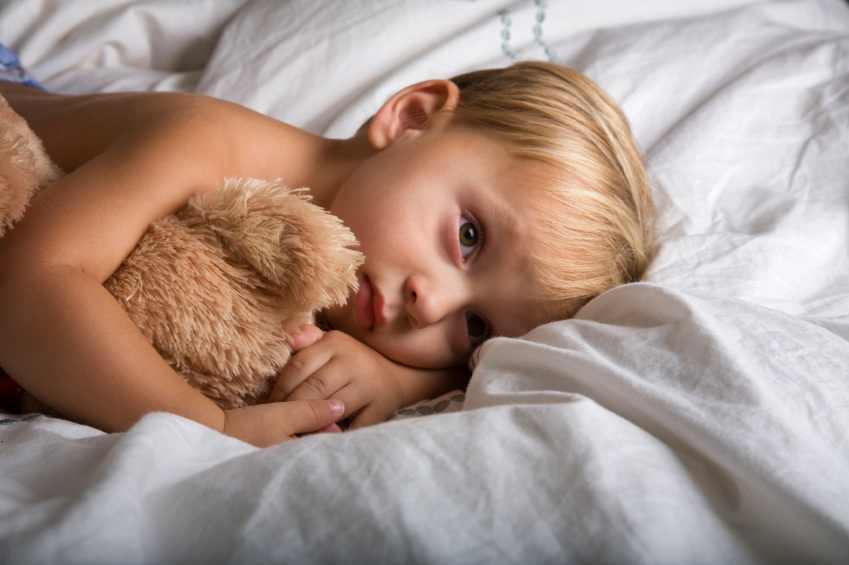
A mother of a three-year-old, who just started daycare, notices that she consequently now misses her noon nap, making her so worn out in the afternoon that she goes to sleep at the dinner table, then can’t get to sleep again at bedtime! The child’s sleep pressure is too early for bedtime, but too late for her nap.
Unfortunately, for children under six or seven there is no easy fix. They need to align themselves time wise just like the rest of us and it will take time, but often no small amount of discomfort and crying as well. Understanding, patience and adaptability are just not the strong suits of pre-school children.
Somehow, you’ve got to shoot for a 7PM or later bedtime. Adequate sleep averages around 10-11 hours at that age, going to bed any earlier means they’ll wake up much earlier than you want them to.
Perhaps a “power nap” of not more than 15-20 minutes will take the edge off until the new bedtime, but be prepared for unhappiness when you wake them. You may have to push some fun outdoor activities to keep them awake. For heaven’s sake don’t rely on the TV – you may think they’re awake, but they can “zone out” even with the noise.
Just like with older kids they will re-adjust eventually IF you are consistent in keeping them awake when they ought to be. Sleep pressure will eventually catch up with them, even if they are too young to understand your copious kind and patient explanations and pleas.
It may seem reasonable to at least let them noon nap on the weekends. And sometimes you can get away with it, but my experience tells me that it’s best not to muddy the waters while trying to set up new habits and circadian rythms.
Challenging the bedtime boundaries
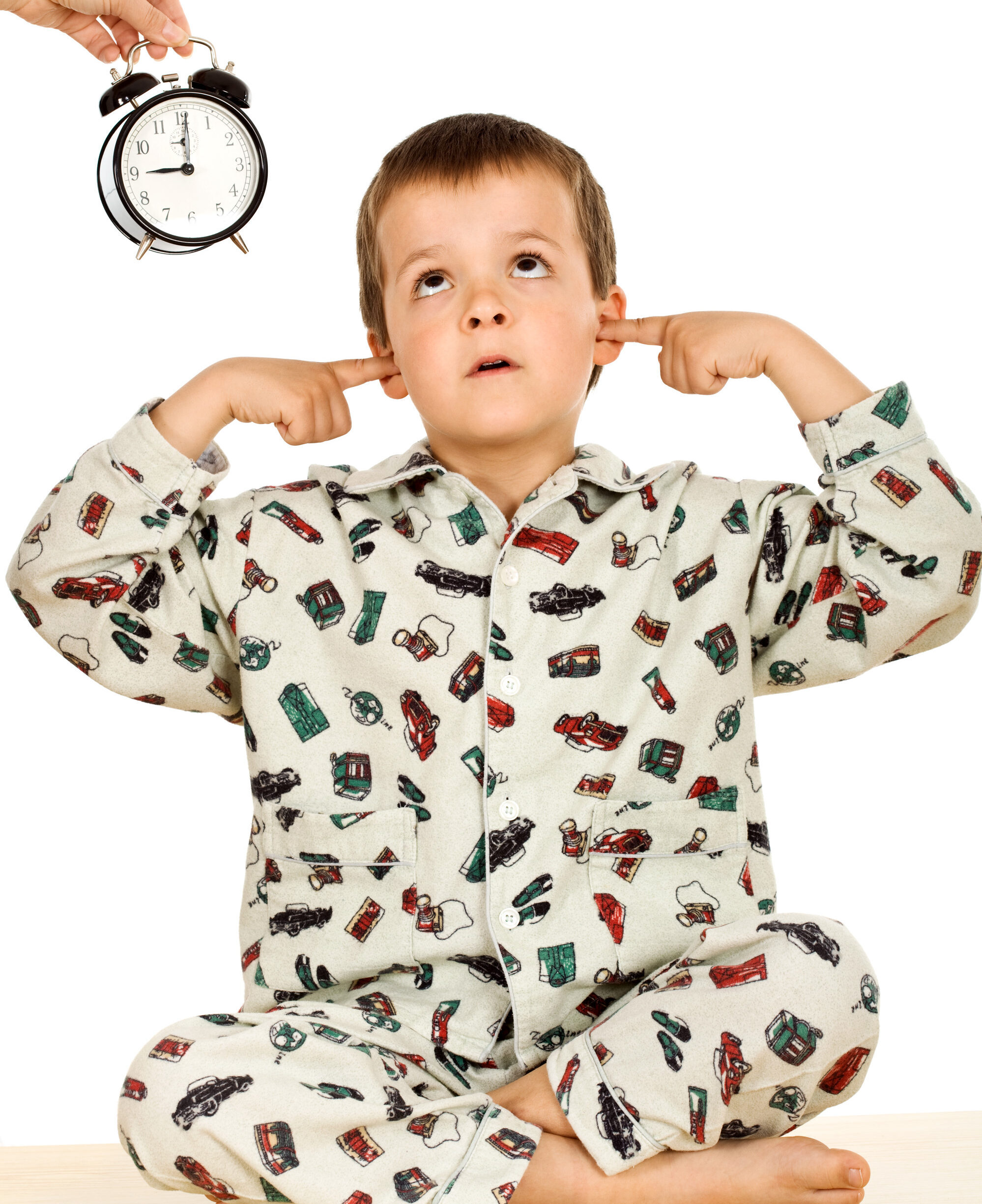
The final common issue relates to the fact that all children master manipulation skills W A Y before their brain understands rationale and reasoning! Way, Way before; especially at bedtime.
It may take you a couple of kids to learn this; but, children under 5 or 6 aren’t developed enough to intellectualize and reason. What they DO understand is matter-of-factness and resolve… and tone. Older kids can understand: “this is the way it is, so get over it” and do. Younger ones can and will “get over it” too, even if they can’t understand the rhetoric. How long it takes depends largely upon you (matter-of-factness, resolve… and tone).
YOU decide where the boundaries are for books, screens, drinks, getting out of bed and then enforce them. They can choose preferences such as which story, which pajamas, which quiet song etc.; but, none of that encroaches on the boundaries you’ve decided. Once YOU decide on it for REAL, you might be amazed how quick they catch on.
Charts, stars, rewards – it’s all good if it works for your family.
Infrequent Toddler-Big Kid Sleep Issues
That’s all of the common sleep issues in toddler-big kids I can think of; but, let’s mention a couple of less common issues which seem to generate questions in parents’ minds.
Not Enough Exercise and/or Too Much Computer Time
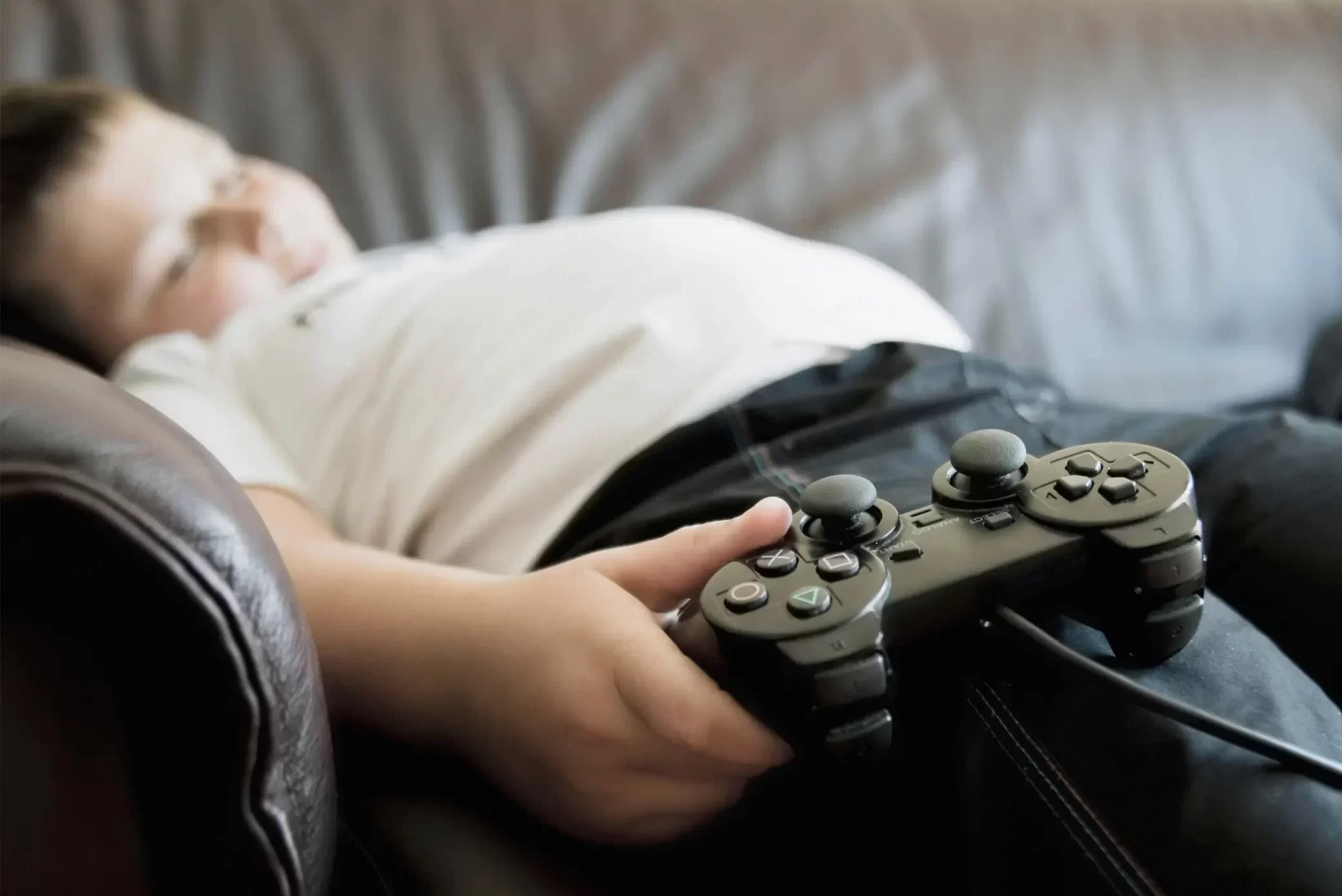
By now everybody knows that we’re in an obesity crisis – worldwide!
So, it’s no surprise that perhaps the single most cause of sleep disturbances in children is inactivity. Pure and simply: “active kids tend to be better sleepers”… and NO, watching TV does NOT count as active, even if it is sports.
Your child spends the first half of the day sitting at school and the second half in front of the TV or computer. Research in New Zealand showed that for every hour of inactivity during the day a child takes at least 3 minutes longer to fall asleep. [Do the math, with 10 hours of school and TV that’s 30 minutes lying in bed before sleep].
As I’ve said, exercise produces brain chemicals that generate sleep pressure, and if done outside, the color frequency of the sun’s light sets the body clock. Additionally, it’s been doubly shown that the “bluish” color frequency produced by ANY screen actually disturbs the natural sleep/wake cycles. Even NASA has spent the money to change all the lightbulbs in the space station to dim and turn into “dusk” color 1-2 hours before sleep cycle!
You want to get on top of this? At minimum 30-45 minutes of good exercise every day AND at least a 60-90-minute electronics blackout before bed. Easy peasy, right?
Anxiety
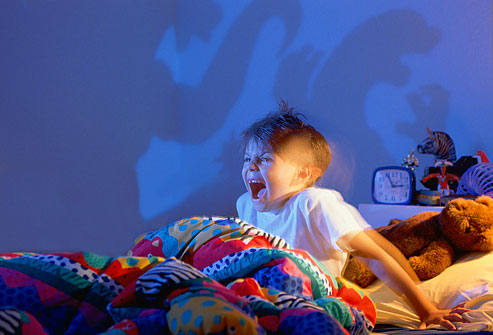
Kids don’t worry about losing a job or their finances but going to school generates its own anxieties like grades, popularity and disappointing their parents. Even worry over real-life events like bullying, civil unrest, home dangers and sleeping alone take their toll.
They look tired and even exhausted, but they get a “stomachache,” or do the “one more” routine for hugs, bathroom or drinks. They cry and fuss when you attempt to close off the negotiations and leave. Your parental “Spidey sense” tells you there’s a problem but bedtime isn’t the time to delve into it. Temporize with what is needed for the night, but continued negotiations or relinquishing control of the expectations merely rewards their improper behavior.
You can use your parental problem-solving skills to fit the specific situation and resolve the issue over the next day (or day’s); but a nightlight may need to be left on and some fussing endured, while they learn to accept new nighttime habits and expectations.
Middle-of-the-Night Waking
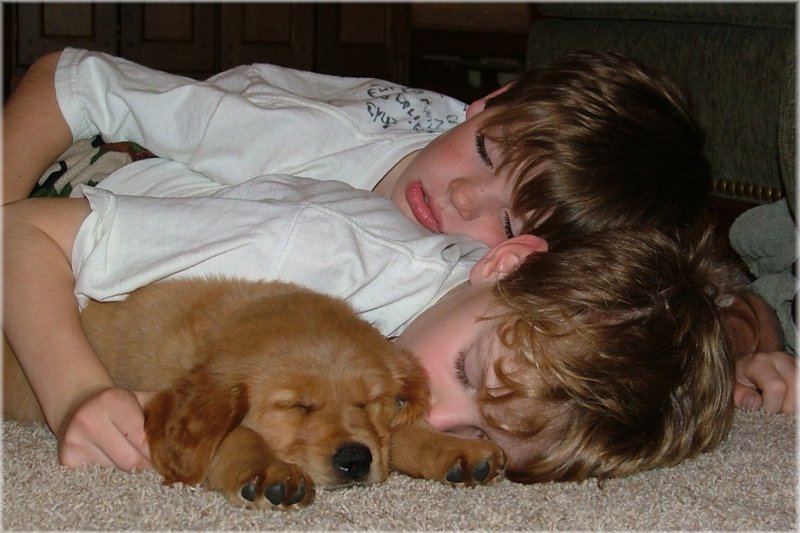
It’s rare for a child to get too much sleep; but, doing so can lead to “split night” sleep so let’s get that out of the way first. Nine to ten hours is usual depending upon the age.
However, any physical problem can cause an otherwise normally sleeping child to awaken at night, but by far and away the most common are bed-sharing, allergies, asthma and reflux (especially with excess weight).
And “he’s around the cat in the day and doesn’t have problems” is NOT an excuse; because, he doesn’t have his face on the cat or it’s dander-filled pillow for 8 hours straight in the day. Inflammation increases and secretions aren’t cleared as well at night. And lying down triggers reflux.
With sufficient sleep a school-aged child rarely needs a nap; so, if they are cranky and exhausted in the day or sleepy before dinner, look for allergy, obesity or other night-disturbing causes and consult your pediatrician for help with other treatment needed.
Snoring
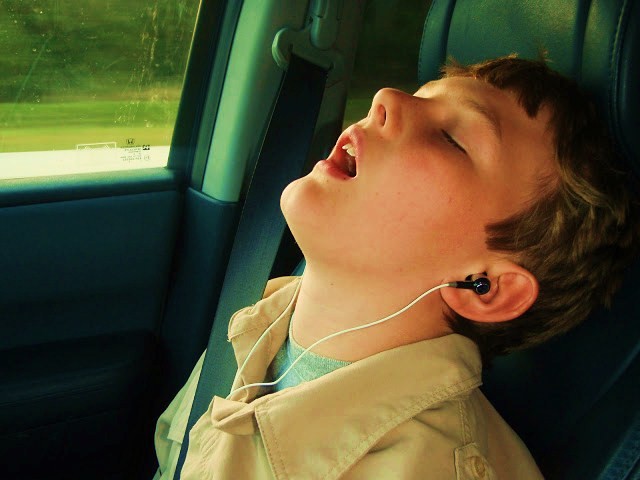
I’m going to go out on a limb and claim “all kids snore.” It’s a rare child who doesn’t snore at least some time before their airways reach adult configuration.
In the “old days” snoring, and the tonsils which it was blamed on, was a major source of income for nose/throat specialists and hospitals. A steady stream of quite lucrative “T&A’s” were performed almost daily everywhere. When research later confirmed that taking them out rarely made any actual difference (and the nay-saying, accusations, wailing and posturing subsided), much more selective “adenoidectomies” became the norm.
Tonsils normally shrink during adolescence and air passages enlarge. If snoring is accompanied with other signs of poor sleep (theirs not yours), the first 99 things to think of are allergies; but, if also accompanied by daytime sleepiness and behavior or learning problems, it’s appropriate to have him examined and evaluated by your pediatrician to rule out sinus, allergies, obesity or apnea issues.
Confirmation of apnea can only be done at a sleep lab, which definitely should be performed before considering tonsil surgery. Sinus medicines, weight loss and sleep positioning might also be considered.
Sleepwalking

There is a bodily reflex, whose name I can’t remember immediately, which completely paralyzes all motor activity during deep sleep. A convenient if not life-saving device if your dreams are frequently about skydiving or sword-fighting.
Rarely, usually running in families, a “glitch” can occur in that functioning allowing movement and sleepwalking can occur. Typically, it occurs in the first few hours after bedtime and is heightened in times of stress and sometimes heavy daytime activity.
Although he or she will likely outgrow it, until they do safety is the concern with bars or locks on windows, high locks on front and back doors, covering dangerous objects like radiators, clearing toys and stumbling blocks from the room and other items unique to your home.
If you observe the sleepwalking, it’s OK to awaken them, but it’s often very difficult so gently guide them back to bed and settle them. If it happens frequently, talk to your pediatrician for exam and possible medication.
Wiggly Legs or Limbs
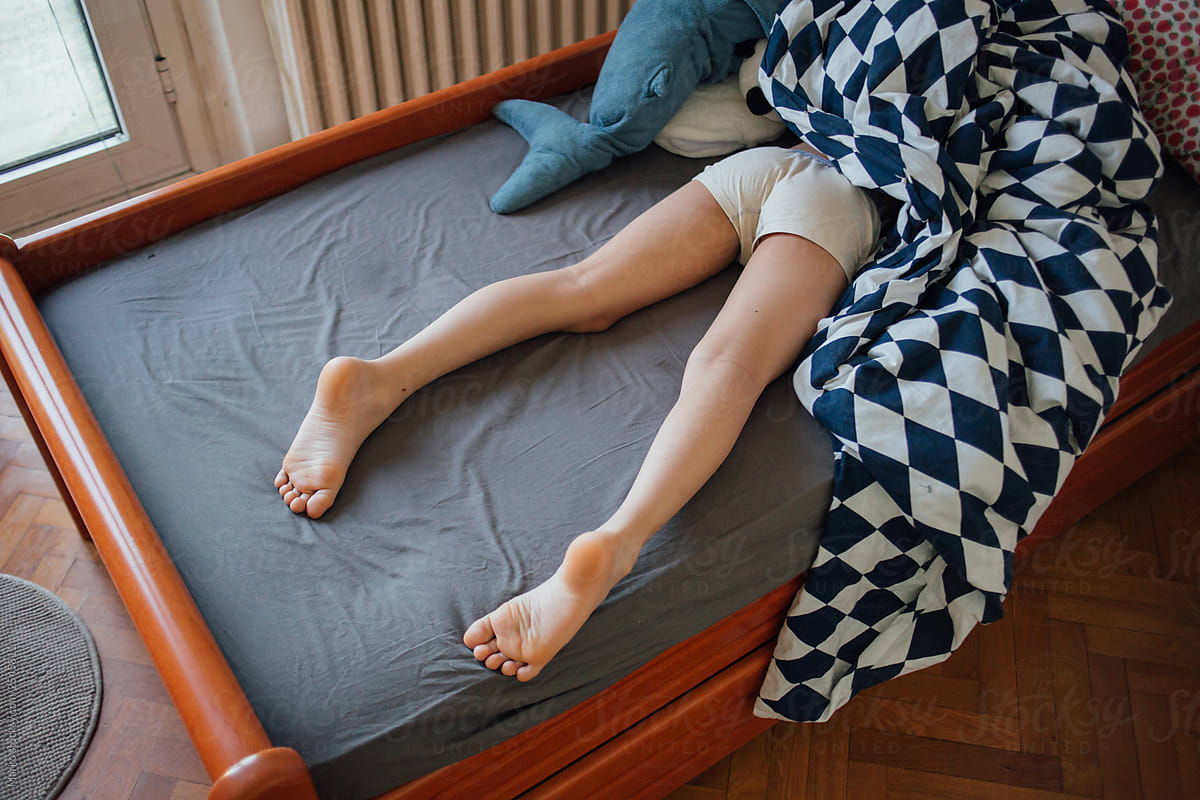
The best sleep occurs in a slightly cooler environment; so, it’s not uncommon to discover a child has kicked off his covers if you go in to “check on him” before you go to bed yourself. They may even keep kicking them off after you dutifully put them back on over and over. The first thing you should think is “they’re too warm” and allow for it.
On the other hand, if their movements are strong enough to wake them up or they have other symptoms of poor sleep during the day then it may warrant some troubleshooting for other causes. A “one and done” sort of problem may be due to unusually excessive day activity and muscle soreness.
More chronic issues might be things like the “restless leg syndrome” or “periodic limb movement disorder” in which the legs “tingle” and need to move or twitch and kick during sleep. And it might run in your family and be tied to a shortage of iron, folic acid or the brain chemical Dopamine.
Your pediatrician can help you sort it out if it comes to that. Supplements, a before bed heating pad or medications might be needed. A massage always feels good.
So, What’s A Parent To Do?
List of Solutions
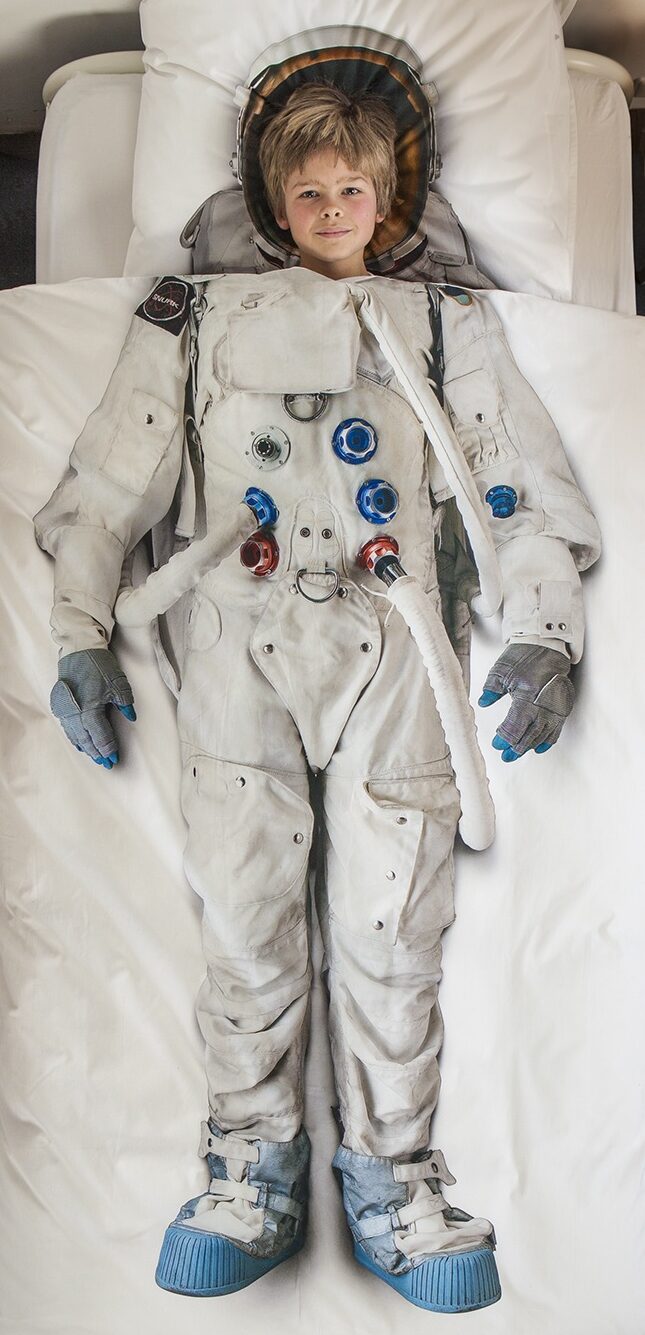
A great night’s sleep is nearly always possible if you remember that it starts hours before actual bedtime.
• As much as possible, seek time in the sunlight every day.
• Religiously seek at least 30 to 60 minutes of active exercise each day but not within 90 minutes of bedtime.
• Avoid caffeine sources. Kids don’t drink coffee, but there’s plenty of caffeine in soda and chocolate candy. Stop intake of all caffeine sources after lunch.
• Stick to a regular bedtime and wake time. Most kids adapt easily if a bedtime is missed once a week, but more often, and you’re asking for trouble.
• Limit cell phones. Research showed that exposure to radiofrequency waves (i.e. cell phones) for three hours before bedtime had diminished deep-phase sleep. Be sure your child stops texting and talking early in the evening.
• Stop exposure to all screens (phone, TV, computer) at least 90 minutes before bedtime. Dimmed light, calming music and activities relaxing to the mind are also beneficial.
• Skip scary movies. They’re not only arousing, but they can also lead to nightmares. Unsettling nighttime dreams also result from a child’s real fears, so open a dialogue (in the light of day) about anything troubling them.
• Bedtime cues are helpful. End every day the same way: A bath, a snuggle or a book will come to signal sleepy time.
6 Posts in Children's Sleep (sleep) Series
- Sleep in Toddlers, Older Children – 28 Feb 2023
- More sleep training and tips, Infants - Part 2 – 11 Mar 2016
- Sleep Expectations and Training, Infants – 6 Mar 2016
- Sleep In Teenagers – 28 Jan 2016
- How much sleep – 20 Jan 2016
- Children's Sleep series: Intro/Index – 19 Jan 2016
Advertisement by Google
(sorry, only few pages have ads)

